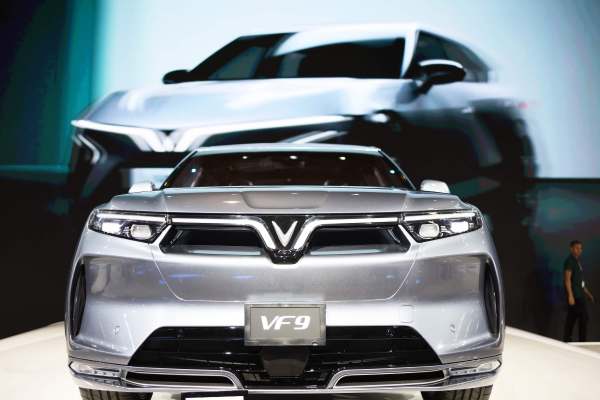For years, observers have thought that consumers would be better off leasing EV batteries than buying them outright — because the batteries are prone to degradation, because new technology will turn the old ones obsolete, because someday you might be able to upgrade your car’s battery with a better one and so on.
Thing is, leasing is seldom financially beneficial to the consumer unless they’re really pressed for cash at the time of purchase. Battery leasing is unlikely to be any different.
Vietnamese automaker VinFast is testing the waters with plans to sell EVs while leasing their batteries, and the terms of the deal seem so skewed that I suspect VinFast’s business model is less about the purported consumer benefits than it is about maintaining control of the batteries from start to finish. By offering a battery subscription, VinFast may say they’re trying to lower the barriers of EV ownership, but their real play appears to be in harvesting the residual value of the battery.
VinFast’s battery leasing model could offer some modest advantages depending on a customer’s driving habits. It offers two options: unlimited, which has a higher monthly cost but comes with no mileage limit; and flexible, which has a lower fixed cost but only includes 310 miles per month. The company also says it will replace the battery if at any point its capacity drops below 70%, though that’s not much of a distinguishing feature since other EV batteries are warrantied against the same for eight to 10 years.
For people who drive half as much as the average American, the flexible subscription could save $1,000 to $2,500 over the unlimited one, depending on the model and length of the lease. That’s a best-case scenario, though. At 11 and 15 cents per mile over 310, annual road trips could easily eat up a third of the cost savings of the flexible plan. In seven to 10 years, if VinFast is still offering a subscription program, it might be worth it since the customer could get an old car with a fresh battery. But the rest of the vehicle will be at or nearing the end of its warranty. (I ran the numbers for five and seven years, which is a typical ownership period for a new vehicle.)
Up against the competition, VinFast’s pricing model fares worse. The VF8, its compact SUV, is more expensive than the cheapest Chevy Bolt EUV or Volkswagen ID.4, about even with the Kia EV6, and about $3,000 cheaper than the base Ford Mustang Mach-E or Hyundai Ioniq 5. With all those vehicles, the consumer owns the battery.
Nonetheless, VinFast is pressing ahead. Here is why it’s probably so enthusiastic about subscriptions.
The obvious reason is that companies and investors love recurring revenue. Subscription revenue is more stable and predictable, and monthly payments help maintain close relationships with customers. It all keeps the money flowing.
But with EV batteries, it’s more than that. They have proven to be surprisingly long-lived, lasting a decade or more inside a vehicle before becoming backup power for the electrical grid. And when that second life ends, their valuable minerals can be recycled. Unlike mobile phone batteries, which are a relatively small fraction of a device’s value, EV battery packs can make up a third of a vehicle’s price.
Consumers may mistakenly think the cells are worthless after they drop below a certain threshold, but manufacturers know better. If batteries are charged and discharged infrequently, as they would be under VinFast’s distance-limited subscription, they’ll be in very good shape after even a decade of use. A VF8 owner who drives half as much as the average American will have spent $11,100 over 10 years — a little more than the likely cost of the pack — and VinFast will still own a battery that will probably be worth 50% of its original value.
VinFast is probably counting on more people choosing the unlimited subscription. After all, it would take an extremely rational consumer to determine exactly how much savings they could wring from the limited-mileage option, and car buyers aren’t known to be a rational bunch. Each unlimited subscriber will net VinFast another $2,000 over 10 years, almost certainly offsetting the additional wear and tear on the battery.
It’s possible that VinFast’s crossovers will be bargains for their price, even with the subscription costs factored in, but it’s facing stiff competition. Still, you can bet the other automakers are going to be watching the experiment intently. The upsides for them are just too great.
